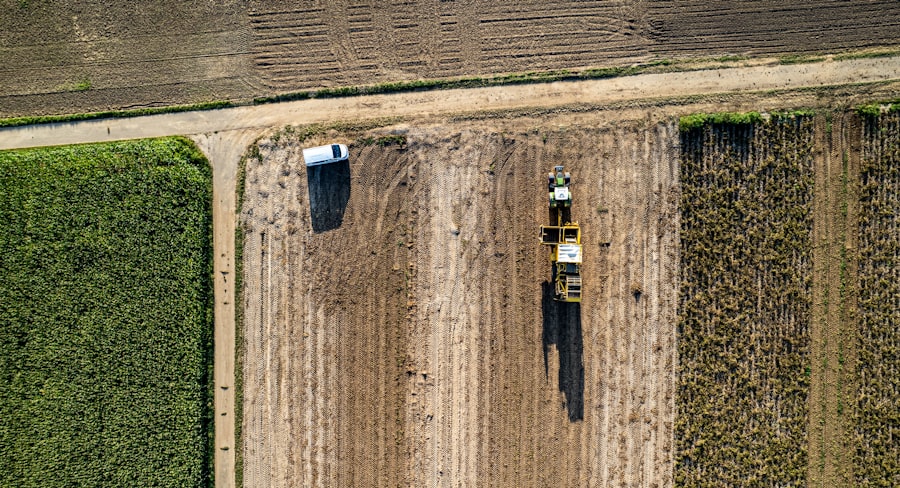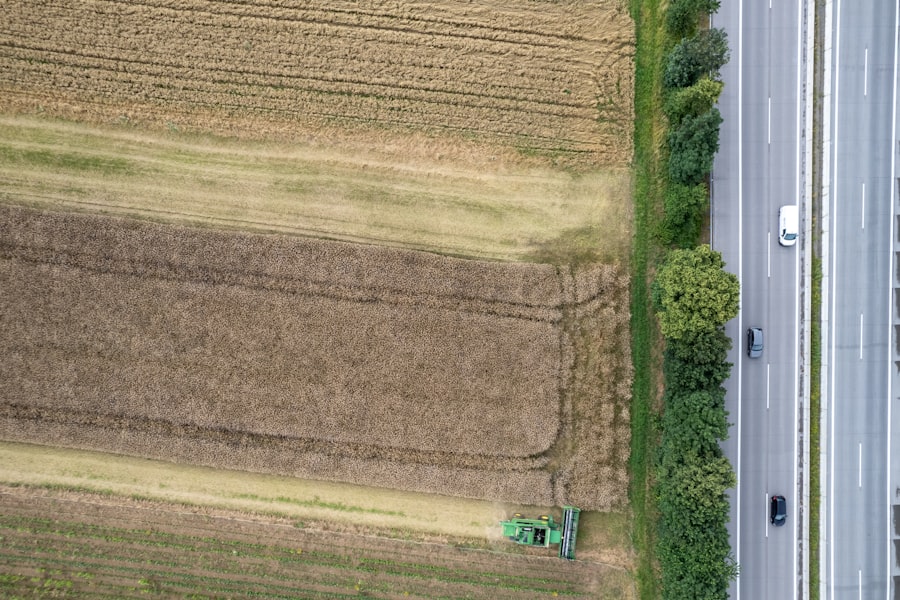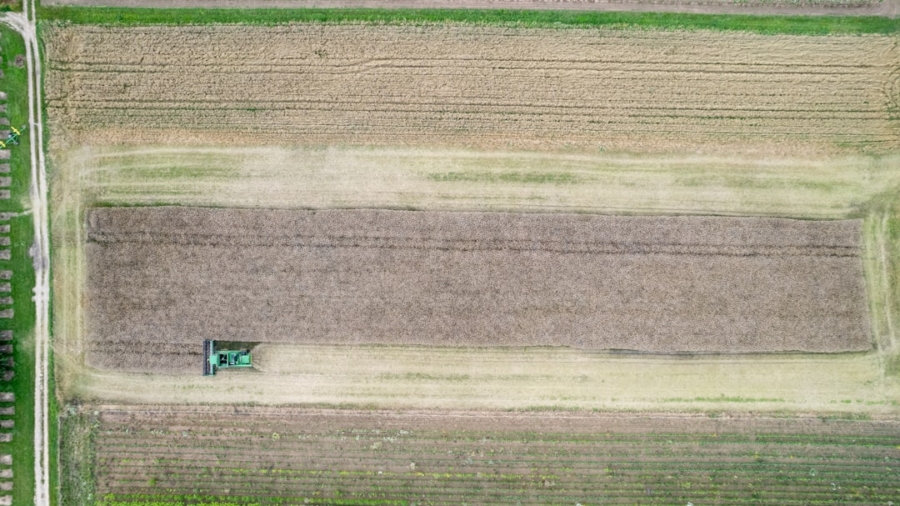Precision agriculture, often referred to as smart farming, represents a transformative approach to agricultural practices that leverages technology to enhance crop yields, optimize resource use, and minimize environmental impact. This methodology is characterized by its data-driven decision-making processes, which allow farmers to tailor their practices to the specific needs of their crops and fields. By utilizing a combination of GPS technology, remote sensing, and data analytics, precision agriculture enables farmers to monitor and manage their fields with unprecedented accuracy.
This shift from traditional farming methods to a more scientific approach has the potential to revolutionize the agricultural sector, making it more efficient and sustainable. The concept of precision agriculture emerged in the late 20th century as advancements in technology began to intersect with agricultural practices. Initially, it was primarily focused on soil management and crop monitoring, but it has since evolved to encompass a wide range of applications, including irrigation management, pest control, and nutrient application.
The integration of these technologies not only enhances productivity but also addresses critical issues such as food security and environmental sustainability. As the global population continues to rise, the demand for food increases, necessitating innovative solutions that can maximize agricultural output while minimizing resource consumption.
Key Takeaways
- Precision agriculture leverages technology to optimize farming efficiency and productivity.
- Emerging technologies like drones, IoT, and AI play a crucial role in advancing precision agriculture.
- Scaling precision agriculture offers benefits such as increased yields, resource conservation, and cost savings.
- Challenges in scaling include high initial costs, data management complexities, and technology adoption barriers.
- Future trends emphasize enhanced data analytics, automation, and integration of innovative tools for smarter farming.
The Role of Emerging Technologies in Precision Agriculture
Emerging technologies play a pivotal role in the advancement of precision agriculture, providing farmers with tools that enhance their ability to monitor and manage their crops effectively. One of the most significant innovations is the use of drones equipped with multispectral cameras. These drones can capture high-resolution images of fields, allowing farmers to assess plant health, identify pest infestations, and evaluate water stress levels.
By analyzing this data, farmers can make informed decisions about where to apply fertilizers or pesticides, ultimately leading to more efficient resource use and reduced chemical runoff. Another critical technology is the Internet of Things (IoT), which connects various devices and sensors throughout the agricultural landscape. IoT devices can monitor soil moisture levels, temperature, and nutrient content in real-time, providing farmers with continuous feedback on their crops’ conditions.
This data can be integrated into farm management software, enabling farmers to automate irrigation systems or adjust nutrient applications based on real-time needs. The ability to respond quickly to changing conditions not only improves crop health but also conserves water and reduces input costs.
Advantages of Scaling Precision Agriculture

Scaling precision agriculture offers numerous advantages that extend beyond individual farms to impact entire agricultural systems. One of the most significant benefits is increased efficiency in resource utilization. By applying inputs such as water, fertilizers, and pesticides more precisely, farmers can reduce waste and lower costs.
For instance, variable rate technology (VRT) allows farmers to apply different amounts of inputs based on specific field conditions, ensuring that each area receives exactly what it needs for optimal growth. This targeted approach not only enhances crop yields but also minimizes environmental harm by reducing excess runoff into nearby waterways. Moreover, scaling precision agriculture can lead to improved sustainability practices.
As farmers adopt these technologies on a larger scale, they contribute to a reduction in greenhouse gas emissions associated with traditional farming methods. For example, precision irrigation systems can significantly decrease water usage by delivering water directly to the root zone of plants rather than through inefficient methods like flood irrigation. This not only conserves water resources but also helps maintain soil health by preventing erosion and nutrient leaching.
The cumulative effect of these practices can lead to a more resilient agricultural system capable of withstanding climate change impacts.
Challenges and Limitations of Scaling Precision Agriculture
Despite its numerous advantages, scaling precision agriculture is not without challenges and limitations. One significant barrier is the high initial investment required for technology adoption. Many small- and medium-sized farms may struggle to afford the necessary equipment and software, which can limit their ability to compete in an increasingly technology-driven market.
Additionally, the ongoing costs associated with maintaining and updating these technologies can be prohibitive for some farmers. Another challenge lies in the complexity of data management and analysis. Precision agriculture generates vast amounts of data that must be processed and interpreted effectively to inform decision-making.
Farmers may lack the technical expertise or resources needed to analyze this data comprehensively. Furthermore, issues related to data privacy and ownership can arise as farmers increasingly rely on third-party companies for data storage and analysis services. Ensuring that farmers retain control over their data while still benefiting from technological advancements is a critical concern that must be addressed as precision agriculture continues to scale.
Case Studies of Successful Scaling of Precision Agriculture
Several case studies illustrate the successful scaling of precision agriculture across different regions and crop types. One notable example is the use of precision agriculture techniques in California’s almond industry. Farmers in this region have adopted advanced irrigation management systems that utilize soil moisture sensors and weather data to optimize water usage.
By implementing these technologies, almond growers have reported significant reductions in water consumption—up to 30%—while maintaining or even increasing yields. This success demonstrates how precision agriculture can address critical resource challenges in water-scarce regions. Another compelling case study comes from Brazil’s soybean production sector.
Brazilian farmers have embraced precision agriculture technologies such as satellite imagery and variable rate application systems to enhance their farming practices. By analyzing satellite data, farmers can identify areas within their fields that require different management strategies based on soil fertility levels or pest pressures. This targeted approach has led to increased soybean yields and reduced input costs, showcasing how precision agriculture can drive profitability while promoting sustainable practices.
Future Trends and Innovations in Precision Agriculture

The future of precision agriculture is poised for further innovation as new technologies continue to emerge. One promising trend is the integration of artificial intelligence (AI) and machine learning into agricultural practices. These technologies can analyze complex datasets more efficiently than traditional methods, enabling farmers to make predictive decisions based on historical trends and real-time data.
For instance, AI algorithms can forecast pest outbreaks or disease risks by analyzing environmental conditions and historical crop performance data, allowing farmers to take proactive measures before issues arise.
Genetic engineering techniques such as CRISPR are being explored to develop crops that are more resilient to environmental stressors like drought or pests.
When combined with precision agriculture practices, these innovations could lead to crops that require fewer inputs while maintaining high yields. The synergy between biotechnology and precision agriculture has the potential to create a new paradigm in sustainable farming.
The Importance of Data and Analytics in Scaling Precision Agriculture
Data and analytics are at the heart of scaling precision agriculture effectively. The ability to collect, analyze, and interpret data from various sources allows farmers to make informed decisions that enhance productivity and sustainability. For instance, integrating weather forecasts with soil moisture data enables farmers to optimize irrigation schedules based on predicted rainfall patterns, reducing water waste while ensuring crops receive adequate hydration.
Moreover, advanced analytics can help identify trends over time, allowing farmers to refine their practices continually. By analyzing historical yield data alongside input usage records, farmers can determine which practices yield the best results under specific conditions.
The Potential Impact of Scaling Precision Agriculture
The potential impact of scaling precision agriculture extends far beyond individual farms; it has implications for global food security, environmental sustainability, and economic viability within the agricultural sector. As more farmers adopt precision agriculture technologies, we can expect significant improvements in resource efficiency and crop productivity. The integration of emerging technologies such as AI, IoT, and biotechnology will further enhance these benefits while addressing some of the challenges associated with traditional farming methods.
Ultimately, scaling precision agriculture represents a critical step toward creating a more sustainable food system capable of meeting the demands of a growing global population while minimizing environmental impact. By harnessing the power of data-driven decision-making and innovative technologies, we can pave the way for a future where agriculture thrives in harmony with nature.
In the context of how emerging technology is transforming precision agriculture, it’s interesting to explore the broader implications of tech advancements in various fields. For instance, the article on the best software for social media management in 2023 highlights how digital tools can enhance communication and marketing strategies, which can also be applied to agricultural businesses looking to optimize their outreach and engagement with consumers. This intersection of technology and agriculture underscores the importance of leveraging innovative solutions to achieve efficiency and effectiveness at scale.
FAQs
What is precision agriculture?
Precision agriculture is a farming management approach that uses technology to monitor and optimize crop production. It involves collecting data on soil conditions, weather, crop health, and other factors to make informed decisions that increase efficiency and yield while minimizing waste.
What types of emerging technologies are used in precision agriculture?
Emerging technologies in precision agriculture include drones, satellite imagery, Internet of Things (IoT) sensors, artificial intelligence (AI), machine learning, robotics, and advanced data analytics. These technologies help gather real-time data and automate farming processes.
How does precision agriculture benefit farmers?
Precision agriculture helps farmers increase crop yields, reduce input costs (such as water, fertilizers, and pesticides), improve resource management, and minimize environmental impact. It enables more accurate planting, irrigation, and harvesting decisions.
Can precision agriculture be implemented on large-scale farms?
Yes, precision agriculture technologies are scalable and can be implemented on large farms. Advanced data analytics and automated machinery allow for efficient management of extensive agricultural operations.
What role do drones play in precision agriculture?
Drones are used to capture high-resolution aerial images of fields, monitor crop health, assess soil conditions, and detect pest infestations. This data helps farmers make timely decisions to improve crop management.
How do IoT sensors contribute to precision agriculture?
IoT sensors collect real-time data on soil moisture, temperature, nutrient levels, and weather conditions. This information enables precise irrigation and fertilization, optimizing plant growth and conserving resources.
Is precision agriculture environmentally sustainable?
Yes, precision agriculture promotes sustainability by reducing overuse of water, fertilizers, and pesticides. It helps minimize runoff and soil degradation, contributing to more environmentally friendly farming practices.
What challenges exist in adopting precision agriculture technologies?
Challenges include the high initial cost of technology, the need for technical expertise, data management complexities, and connectivity issues in rural areas. However, ongoing advancements are making these technologies more accessible.
How does artificial intelligence enhance precision agriculture?
AI analyzes large datasets from sensors and imaging to identify patterns, predict crop yields, detect diseases, and optimize resource use. This leads to smarter decision-making and improved farm productivity.
Are there any examples of precision agriculture being used successfully?
Many farms worldwide have successfully adopted precision agriculture technologies, resulting in increased yields and reduced costs. For example, vineyards use drones and sensors to monitor grape health, and large grain farms use GPS-guided machinery for precise planting and harvesting.

